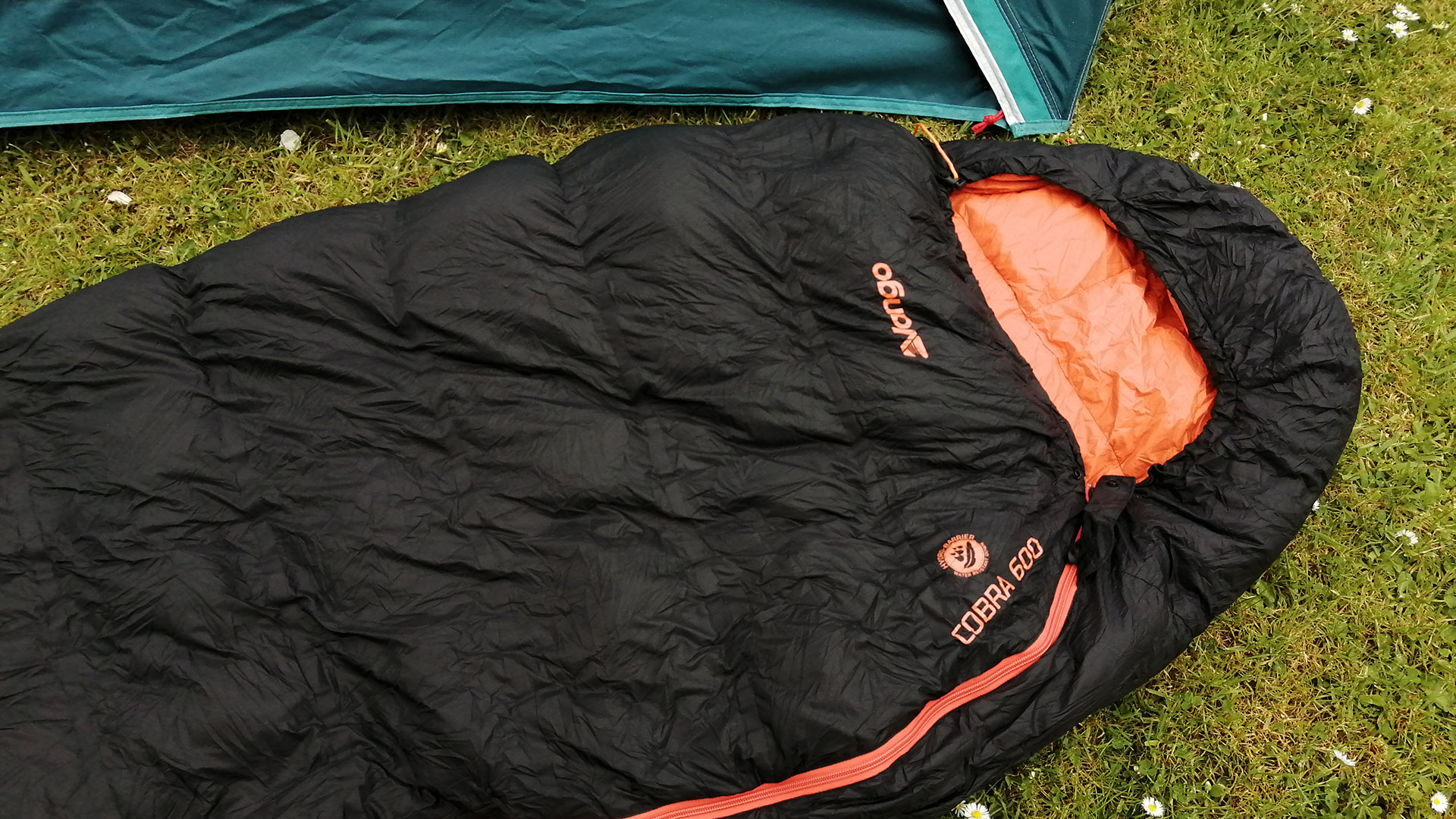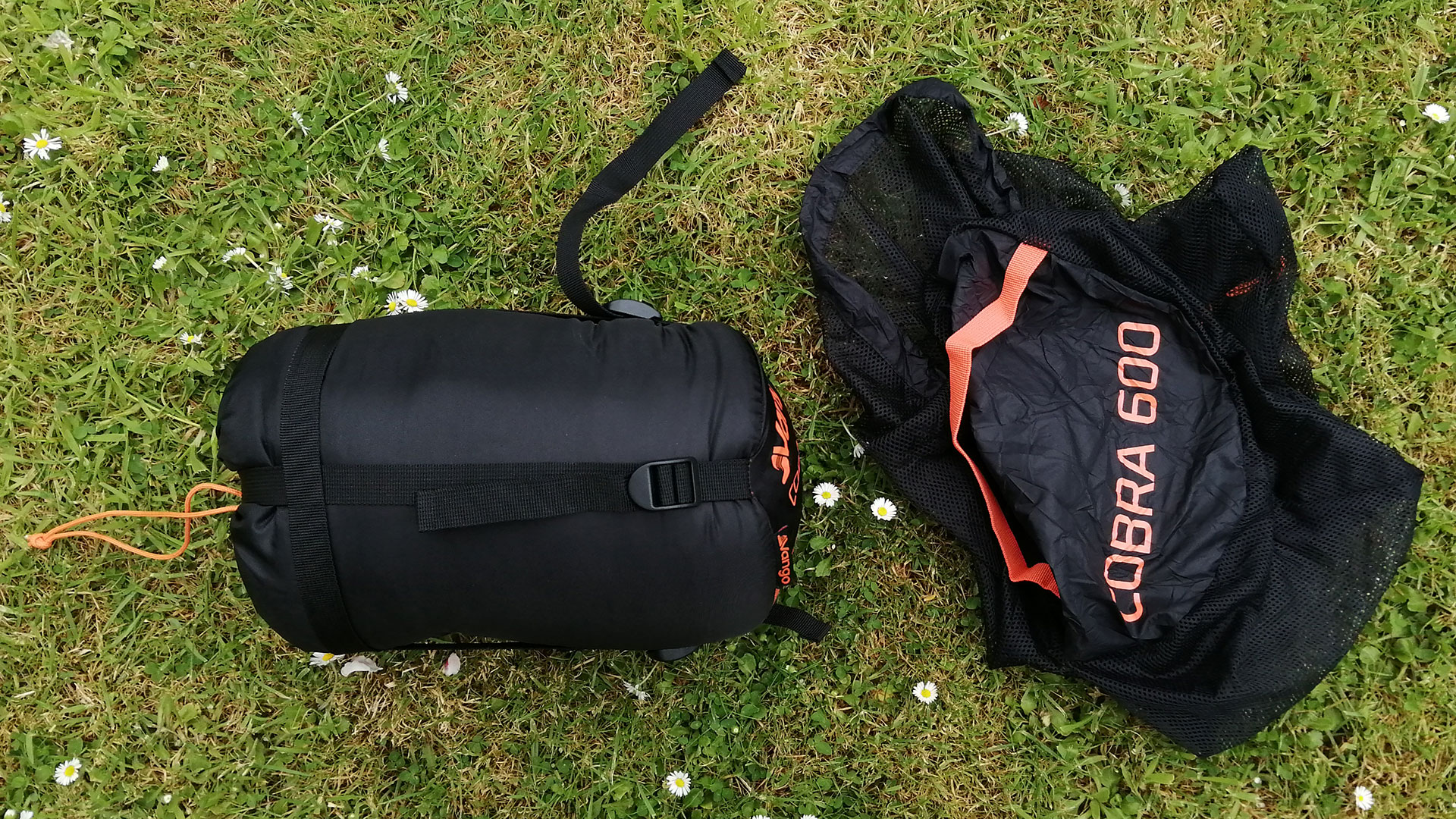Vango Cobra sleeping bag review
The Vango Cobra sleeping bag is designed to provide ample cosiness in a compact package. Here's our review


The Vango Cobra – available in 2, 3, or 4 season versions – is excellent at keeping in your body heat. Things can get clammy on mild nights, but in colder weather this bag would be an excellent choice. Extra features, including a very well designed zipper, help elevate it from the competition.
-
+
Traps body heat very effectively
-
+
Clever, no-snag zip
-
+
Phone pocket
-
-
Heat reflecting properties a bit clammy on warm nights
-
-
Only one size for each weight
Why you can trust T3

The Vango Cobra 600 sleeping bag is pitched as an "extremely lightweight" down sleeping bag, designed to deliver overnight cosiness when space and weight are at a premium in your hiking backpack. It's available in three different versions: the Cobra 200 (two-season, RRP £160), the Cobra 400 (three-season, RRP £22) and the Cobra 600 (four-season, RRP £260). I tried the 600 version, which in theory will see you right on adventures all year round, but the features and design are similar across all three models.
So how does this bag compare to the rest of the products in our best lightweight sleeping bag guide? I've been testing one out to see. Read on for my full Vango Cobra sleeping bag review.
Vango Cobra 600 sleeping bag: design and features
Vango Cobra 600 specs
Weight: 1.1kg
Fill: 90/10 700 Fill Power Goose Down
Temperature: -5°C (Limit), -30°C (Extreme)
Max user height: 190cm (6ft 2)
Shape: mummy
The Vango Cobra 600 is stuffed with 700 fill power, ethically sourced goose down, that's arranged into box-shaped baffle channels that are designed to offer even distribution of filling, maximum loft and minimum heat loss via the seams. Vango says its "distinctively shaped", but it looks an awful lot like a classic mummy to me. The head section can be drawstringed closed around the face, and there's an insulated flap around the shoulders, which again can be tightened or loosened.
A durable 20D 380T Nylon Outer Shell has an aluminimised layer that's designed to radiate your body heat inwards. In a battle of down vs synthetic sleeping bags, the main downside of the former is that it really doesn't get on well with water, and to ensure an unexpected downpour or tent leak doesn't ruin your investment, Vango has used water-resistant nylon on the shell, and given the down a hydrophobic treatment for good measure.
While some lightweight sleeping bag makes will opt for a shorter zip in favour of the weight saving, Vango's Cobras all have full-length two-way zips, with a padded flap to keep the heat in, piping on the inside to prevent snagging, and a chunky plastic casing on the pull section. There's also a velcroed pocket for your phone or keys (this is extremely well disguised, so you might not spot it at first).

It packs into a supplied compression sack with four straps that can be tightened to get it as small as possible, and Vango has also included a mesh storage sack that's a lot roomier, to allow the down to loft when not out on expeditions.
Usually, there's not a men's and women's version for any of the Cobra sleeping bags, nor long or short options. They all fit up to 190cm, which is around 6ft 2. Good news if you're around that height, but potentially annoying if you're 5ft 3 and don't want to tote around a whole load of unnecessary bag – this is being sold as a lightweight option, after all.
Get all the latest news, reviews, deals and buying guides on gorgeous tech, home and active products from the T3 experts

Vango Cobra 600 sleeping bag: comfort
This is a four-season option, but Vango recommends it for use between -12°C and 15°C. I tested it out on a fairly mild May night, and it was certainly very cosy. The aluminimised layer was extremely effective at radiating my own body heat back to me – in fact, things got a little clammy, especially when combined with the slippery feel of the inside of the bag. While it wasn't hugely comfortable during my warm-weather tests, I think it'd really come into its own on a cold night when you actually want your own body heat preserved.
The hood is shaped to fit snugly around your head, and is fairly standard, although Vango has made one of the drawcords orange, with the idea that you can differentiate which one to pull to adjust the upper or lower sections.
One area where some extra effort has clearly been put in is around the zip. There's internal piping and a chunky plastic cover that make it all-but impossible to snag the inside of your bag, alongside your standard baffle flap to stop heat escaping. It's a welcome set of design tweaks that work very effectively in practice.

Vango Cobra sleeping bag review: verdict
The Vango Cobra is an excellent sleeping bag. The 600 version I tried delivered oodles of warmth for a relatively low weight and bag size. You'll be grateful for the aluminised inner when temperatures drop, as it does an excellent job of radiating your body heat inwards to keep things toasty (although I'd steer clear on milder nights, as that combined with the slippery inside fabric can mean things start to feel clammy quite quickly). Vango's redesigned zip system deserves a special shoutout too, making it almost impossible to snag the inside of your bag when closing. Thoughtful additions such as colour-coded drawstrings, a spare mesh bag for at-home-storage and a hidden phone pocket all add up to a compelling package.

Ruth was T3's Outdoors and Wellness Editor from 2020 to 2022, covering hiking, camping and adventure sports kit, as well as mattresses, sleep accessories, yoga and general wellness. She's now a Homes Editor at sister site TechRadar, where she deals in all things air (vacuum cleaners, robovacs, fans and air purifiers), and hair (hair dryers, straighteners and stylers).